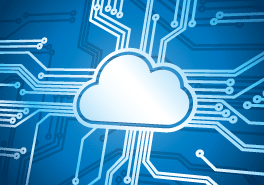HIMSS Analytics reports that over 73 percent of healthcare organizations are using some sort of cloud “as-a-service” solution. “As-a-Service” delivery models have been gaining popularity over the past few years, notably within the healthcare industry.
You’ve likely heard of Desktop-as-a-Service (DaaS), Platform-as-a-Service (PaaS), Infrastructure-as-a-Service (IaaS) or the most common, Software-as-a-Service (SaaS). These services center around the concept of consumption-based computing. The number of users, storage utilization or compute required are generally factors that affect as-a-service models.
Now healthcare practices leverage IT-as-a-Service (ITaaS) to gain access to an end-to-end IT solution, provisioned with the exact hardware, software and support required to run the practice. Many of the benefits of ITaaS are similar to those of cloud computing, but ITaaS offers a wider breadth of coverage across all areas of IT, including:
Migrating specialty applications to the cloud
The ITaaS model migrates your most specialized applications like EHR, PACS and practice management to a secure cloud and delivers them via a secure remote desktop or browser. Choosing a specialty cloud migration partner who understands complex clinical applications ensures best-in-class security, performance and availability.
Desktop-as-a-Service (DaaS)
Most cloud computing services do not include support or management of desktop workstations, keyboards, printers, etc. This burdens the practice with supporting the desktops and can be both time-consuming and unproductive. As an all-encompassing solution, ITaaS is unique in that it provides support and management of the full desktop. This simplifies and streamlines upgrades and maintenance of workstations and centralizes data storage to allow for stable data backup and recovery. It also delivers a remote desktop that gives your users secure access to their files, applications and environments on any device at any location.
Endpoint management
Switches, routers and other network gear are imperative to the user experience, but it’s commonly overlooked in IT planning. ITaaS encompasses the coordination and strategic management of these devices.
Event Monitoring & Remediation
Specialty cloud migration partners deploy sophisticated event monitoring and remediation systems to ensure that service disruptions are minimized. Most in-house IT departments don’t have the experience or budget to provide this capability to their stakeholders.
White-glove service and support
ITaaS provides a level of service that is unparalleled to most IT offerings. Live IT support for your entire desktop is a simple call away. Your support team knows your users and the intricacies of your practice. This level of personal support will help your users get issues resolved faster, with less time spent explaining your situation.
In some cases, specialized, priority support is offered for providers – recognizing their urgent needs and waiting patients. Discuss this option with your ITaaS provider.
Strategic IT business partner
Since ITaaS is a complete solution, your service provider integrates into every aspect of your IT service delivery, from IT roadmap planning to daily service and support for your users. This allows a holistic view of your IT environment and the ability to make decisions proactively, rather than the typical reactive nature of IT.
Flexibility to scale
Similar to other cloud computing models, ITaaS offers the flexibility to scale to accommodate the precise resources your practice needs. This translates into less capital sunk into rigid hardware refresh cycles that either feature over-capitalized and under-utilized hardware, or an under-performing environment due to lack of capital investment.
IT-as-a-Service can be a game changer for healthcare practices. With less time spent managing servers, storage, IT vendors and troubleshooting user issues, you’ll have more time to focus on your patients.
